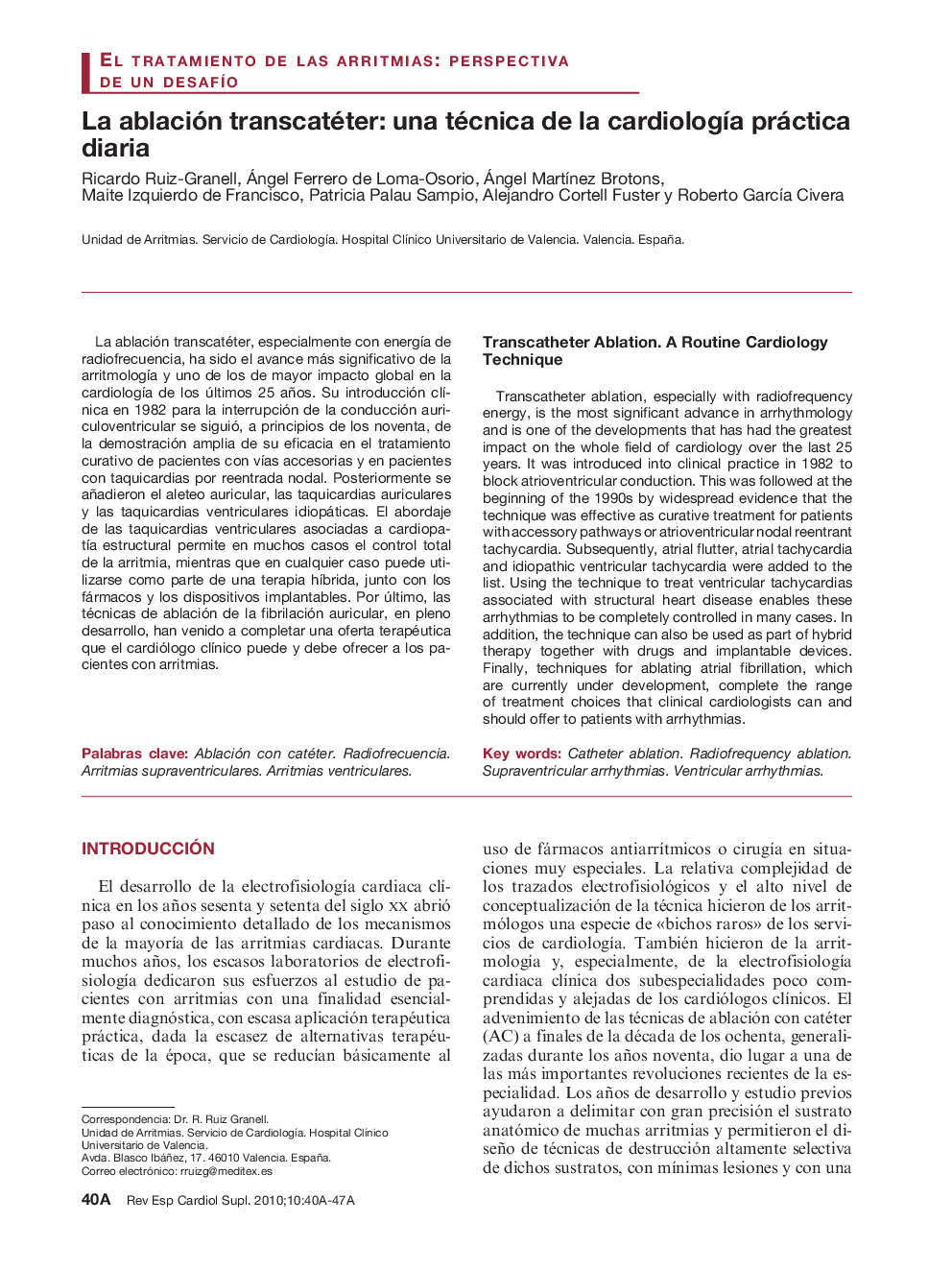| Article ID | Journal | Published Year | Pages | File Type |
|---|---|---|---|---|
| 3019597 | Revista Española de Cardiología Suplementos | 2010 | 8 Pages |
Abstract
Transcatheter ablation, especially with radiofrequency energy, is the most significant advance in arrhythmology and is one of the developments that has had the greatest impact on the whole field of cardiology over the last 25 years. It was introduced into clinical practice in 1982 to block atrioventricular conduction. This was followed at the beginning of the 1990s by widespread evidence that the technique was effective as curative treatment for patients with accessory pathways or atrioventricular nodal reentrant tachycardia. Subsequently, atrial flutter, atrial tachycardia and idiopathic ventricular tachycardia were added to the list. Using the technique to treat ventricular tachycardias associated with structural heart disease enables these arrhythmias to be completely controlled in many cases. In addition, the technique can also be used as part of hybrid therapy together with drugs and implantable devices. Finally, techniques for ablating atrial fibrillation, which are currently under development, complete the range of treatment choices that clinical cardiologists can and should offer to patients with arrhythmias.
Keywords
Related Topics
Health Sciences
Medicine and Dentistry
Cardiology and Cardiovascular Medicine
Authors
Ricardo Dr., Ángel Ferrero de Loma-Osorio, Ángel MartÃnez Brotons, Maite Izquierdo de Francisco, Patricia Palau Sampio, Alejandro Cortell Fuster, Roberto GarcÃa Civera,
